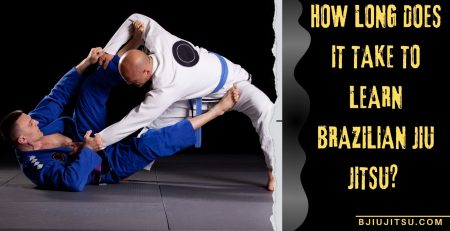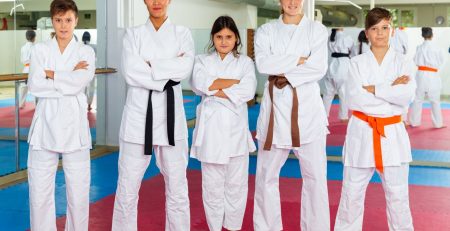Best Martial Arts for Self Defense Guide 2024 – Choose Your Ultimate Protection
Table of Contents:
- Introduction
- Krav Maga: The Israeli Art of Self-Defense
- Brazilian Jiu-Jitsu: Ground Fighting Mastery
- Muay Thai: The Art of Eight Limbs
- Boxing: The Sweet Science of Striking
- Judo: Harnessing the Power of Throws
- Taekwondo: Kicking Techniques for Self-Defense
- Wing Chun: The Close-Range Combat System
- Conclusion
1. Introduction
In a world where personal safety is paramount, mastering a martial art for self-defense can be invaluable. While no single martial art is perfect for every situation, several styles stand out for their effectiveness in real-life confrontations. From the brutal efficiency of Krav Maga to the ground-fighting prowess of Brazilian Jiu-Jitsu, each martial art offers unique skills that can be applied in self-defense scenarios. In this comprehensive guide, we’ll explore the best martial arts for self-defense, examining their techniques, philosophies, and practical applications.
2. Krav Maga: The Israeli Art of Self-Defense
Krav Maga, developed by the Israeli Defense Forces, is renowned for its practical and efficient approach to self-defense. Unlike traditional martial arts, Krav Maga focuses on instinctive movements and simultaneous defense and attack. Its techniques are designed to neutralize threats quickly and decisively, making it ideal for real-life situations. Krav Maga emphasizes simple and effective strikes to vulnerable targets, along with techniques to defend against armed assailants. Its emphasis on aggression and rapid response makes it a popular choice for law enforcement and military personnel worldwide.
3. Brazilian Jiu-Jitsu: Ground Fighting Mastery
Brazilian Jiu-Jitsu (BJJ) is a martial art and combat sport that focuses on ground fighting and submission holds. Developed from traditional Jiu-Jitsu by the Gracie family in Brazil, BJJ teaches practitioners how to control opponents on the ground using leverage and technique rather than brute strength. With its emphasis on grappling and submission techniques, BJJ is particularly effective for self-defense situations that end up on the ground. By learning how to neutralize larger and stronger opponents using joint locks and chokeholds, BJJ practitioners gain confidence in their ability to defend themselves in real-life confrontations. If you’re interested in delving deeper into the world of Brazilian Jiu Jitsu, be sure to check out this informative article on Brazilian Jiu Jitsu. It offers valuable insights into the history, techniques, and benefits of this dynamic martial art.
4. Muay Thai: The Art of Eight Limbs
Muay Thai, also known as Thai boxing, is a combat sport and martial art that originated in Thailand. Known as the “art of eight limbs,” Muay Thai utilizes punches, kicks, elbows, and knee strikes to attack opponents. With its emphasis on powerful striking techniques and clinch fighting, Muay Thai is highly effective for self-defense situations. Practitioners learn how to generate maximum force with every strike, making it possible to incapacitate an attacker quickly and efficiently. Muay Thai also teaches practitioners how to defend against strikes and clinch attacks, making it a well-rounded martial art for self-defense. Wondering about the distinctions between Brazilian Jiu Jitsu and Muay Thai? Explore this article Brazilian Jiu Jitsu vs Muay Thai.
5. Boxing: The Sweet Science of Striking
Boxing, often referred to as the “sweet science,” is a martial art and combat sport that focuses on punching techniques and footwork. With its emphasis on speed, timing, and accuracy, boxing is highly effective for self-defense situations. Practitioners learn how to throw various types of punches, including jabs, crosses, hooks, and uppercuts, with precision and power. Additionally, boxing teaches defensive techniques such as slipping, bobbing, and weaving to evade incoming punches. By mastering the fundamentals of boxing, individuals can effectively defend themselves against attackers while minimizing the risk of injury. If you’re curious about the differences between Boxing and Brazilian Jiu-Jitsu, check out this article Boxing vs Brazilian Jiu Jitsu.
6. Judo: Harnessing the Power of Throws
Judo, translated as the “gentle way,” is a modern martial art and Olympic sport that originated in Japan. Developed from traditional Jiu-Jitsu, Judo emphasizes throwing techniques and grappling maneuvers to control opponents. With its focus on leverage and timing, Judo enables practitioners to overcome larger and stronger adversaries through skillful execution of throws and takedowns. By learning how to use an opponent’s momentum against them, Judo practitioners can neutralize threats without relying on brute force. Additionally, Judo teaches essential self-defense skills such as breakfalls and escapes from holds, making it a valuable martial art for personal protection. For insights into the contrasts between Brazilian Jiu Jitsu and Judo, explore this article Brazilian Jiu Jitsu vs Judo.
7. Taekwondo: Kicking Techniques for Self-Defense
Taekwondo, a Korean martial art known for its dynamic kicking techniques, is widely practiced around the world. With its emphasis on flexibility, agility, and speed, Taekwondo is highly effective for self-defense situations. Practitioners learn how to execute powerful kicks, including front kicks, roundhouse kicks, side kicks, and spinning kicks, to incapacitate attackers from a distance. Additionally, Taekwondo teaches defensive techniques such as blocking, parrying, and evasive footwork to avoid incoming attacks. By combining offensive and defensive skills, Taekwondo practitioners develop a comprehensive approach to self-defense that prioritizes speed and precision. To delve into a comparison of Brazilian Jiu Jitsu, Karate, and Taekwondo, visit this article Brazilian Jiu Jitsu vs Karate vs Taekwondo.
8. Wing Chun: The Close-Range Combat System
Wing Chun, a Chinese martial art renowned for its close-range combat techniques, is known for its efficiency and effectiveness in self-defense situations. Developed by the legendary martial artist Ip Man, Wing Chun emphasizes sensitivity, speed, and directness in combat. Practitioners learn how to use simultaneous attack and defense movements to overwhelm opponents with rapid strikes and blocks. Additionally, Wing Chun teaches specialized techniques such as trapping hands and sticky hands, which enable practitioners to control and manipulate an opponent’s movements at close quarters. By mastering the principles of Wing Chun, individuals can defend themselves effectively in confined spaces and against multiple attackers. And if you’re interested in understanding the differences between Wing Chun and Brazilian Jiu Jitsu, don’t miss this article Wing Chun vs Brazilian Jiu Jitsu.
9. Krav Maga: Practical Self-Defense for Real-World Threats
Krav Maga, a self-defense system developed for the Israeli military, is highly regarded for its practicality and effectiveness in real-world combat scenarios. Unlike traditional martial arts, Krav Maga does not emphasize sport or competition but instead focuses on neutralizing threats quickly and decisively. Practitioners learn a wide range of techniques, including strikes, kicks, joint locks, and defensive tactics, designed to counter various types of attacks. Additionally, Krav Maga teaches situational awareness, aggression management, and rapid decision-making skills to ensure individuals can respond effectively under stress. By combining elements of boxing, Muay Thai, wrestling, and Jiu-Jitsu, Krav Maga provides a comprehensive approach to self-defense that prioritizes survival above all else.
10. Brazilian Jiu-Jitsu: Dominating Grappling and Ground Fighting
Brazilian Jiu-Jitsu (BJJ), a martial art and combat sport, focuses on grappling and ground fighting techniques aimed at controlling opponents and submitting them through joint locks and chokeholds. Developed from traditional Japanese Jiu-Jitsu, BJJ emphasizes leverage, technique, and positional dominance to overcome larger and stronger adversaries. Practitioners learn how to close the distance, clinch, and take the fight to the ground where they can utilize their superior grappling skills to gain control and neutralize threats. Additionally, BJJ teaches practitioners how to defend against common attacks such as punches, kicks, and takedowns while transitioning to advantageous positions. By mastering the art of Brazilian Jiu-Jitsu, individuals can effectively defend themselves in close-quarters combat situations and emerge victorious against opponents of any size or strength.
Conclusion: Empower Yourself with the Best Martial Arts for Self-Defense
In conclusion, the best martial arts for self-defense are those that prioritize practicality, effectiveness, and adaptability in real-world combat situations. Each martial art offers unique techniques and strategies for neutralizing threats and protecting oneself from harm. Whether you prefer striking, grappling, or a combination of both, there is a martial art that suits your needs and preferences. By investing time and effort into training, individuals can empower themselves with the skills and confidence needed to defend against physical aggression and emerge victorious in any confrontation. Remember, the goal of self-defense is not to seek conflict but to ensure personal safety and security in an unpredictable world. So, choose the martial art that resonates with you, commit to your training, and become the best version of yourself both on and off the mat.
Frequently Asked Questions (FAQs) About the Best Martial Arts for Self-Defense
Q1. What are the best martial arts for self-defense?
A: The best martial arts for self-defense are those that prioritize practicality, effectiveness, and adaptability in real-world combat situations. Some of the top choices include Krav Maga, Brazilian Jiu-Jitsu, Muay Thai, Boxing, and Judo.
Q2. Which martial art is best for beginners?
A: For beginners, martial arts that focus on basic techniques, self-defense principles, and gradual skill development are ideal. Brazilian Jiu-Jitsu and Krav Maga often cater well to beginners due to their emphasis on practicality and self-defense applications.
Q3. Can martial arts training help in real-life self-defense situations?
A: Yes, martial arts training can be highly beneficial in real-life self-defense situations. By learning effective techniques, developing situational awareness, and improving physical fitness, individuals can enhance their ability to defend themselves against various threats.
Q4. How long does it take to become proficient in a martial art for self-defense?
A: The time it takes to become proficient in a martial art for self-defense varies depending on factors such as individual aptitude, frequency of training, and the complexity of the martial art. Generally, consistent training over several months to years is required to develop a solid foundation and practical skills.
Q5. Are there age or fitness requirements for learning self-defense through martial arts?
A: No, martial arts training can be adapted to accommodate individuals of all ages and fitness levels. Whether you’re a child, adult, or senior, there are martial arts programs designed to suit your needs and abilities.
Q6. Is it necessary to have prior experience in martial arts before starting self-defense training?
A: No, prior experience in martial arts is not necessary to start self-defense training. Many martial arts schools offer beginner-friendly programs that cater to individuals with no prior experience. It’s never too late to start learning self-defense skills.
Q7. Can women benefit from learning martial arts for self-defense?
A: Absolutely, women can greatly benefit from learning martial arts for self-defense. Martial arts training helps build confidence, strength, and awareness, empowering women to defend themselves against potential threats and navigate dangerous situations with greater confidence.
Q8. How can I choose the right martial art for self-defense?
A: When choosing a martial art for self-defense, consider factors such as your personal goals, physical abilities, and preferences. Try out different martial arts classes, speak with instructors, and assess which style resonates best with you and addresses your self-defense needs.















Leave a Reply
You must be logged in to post a comment.